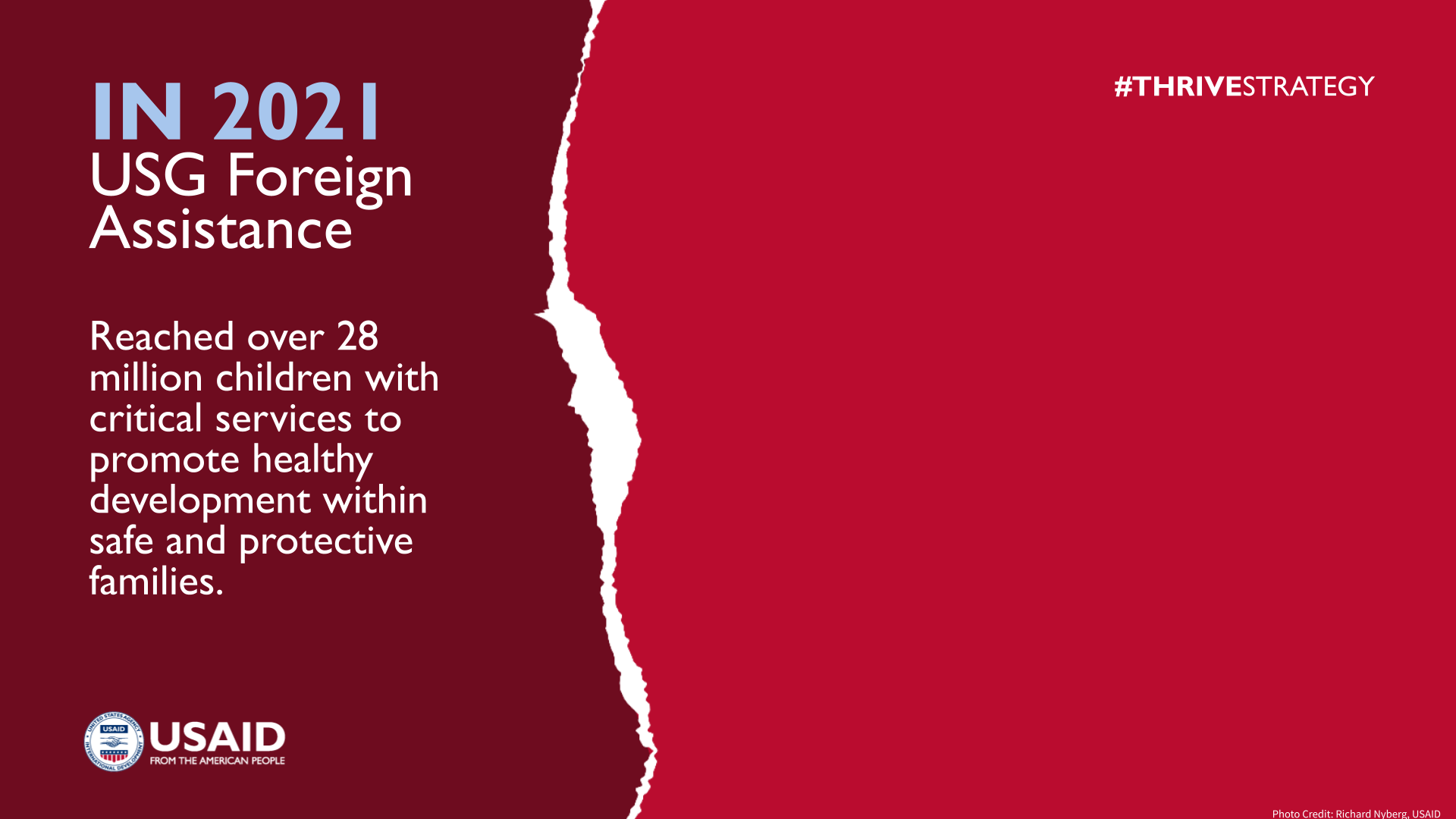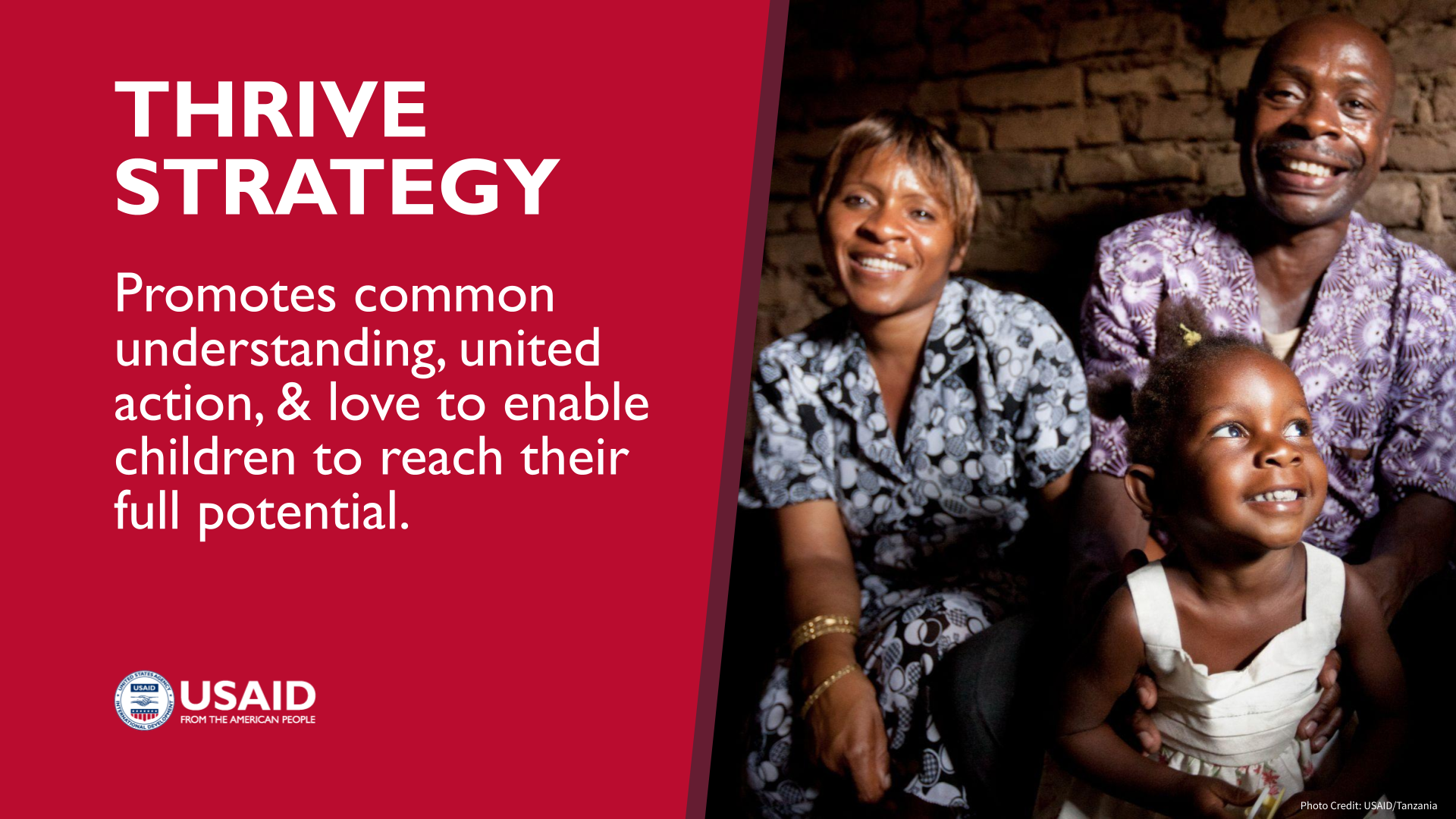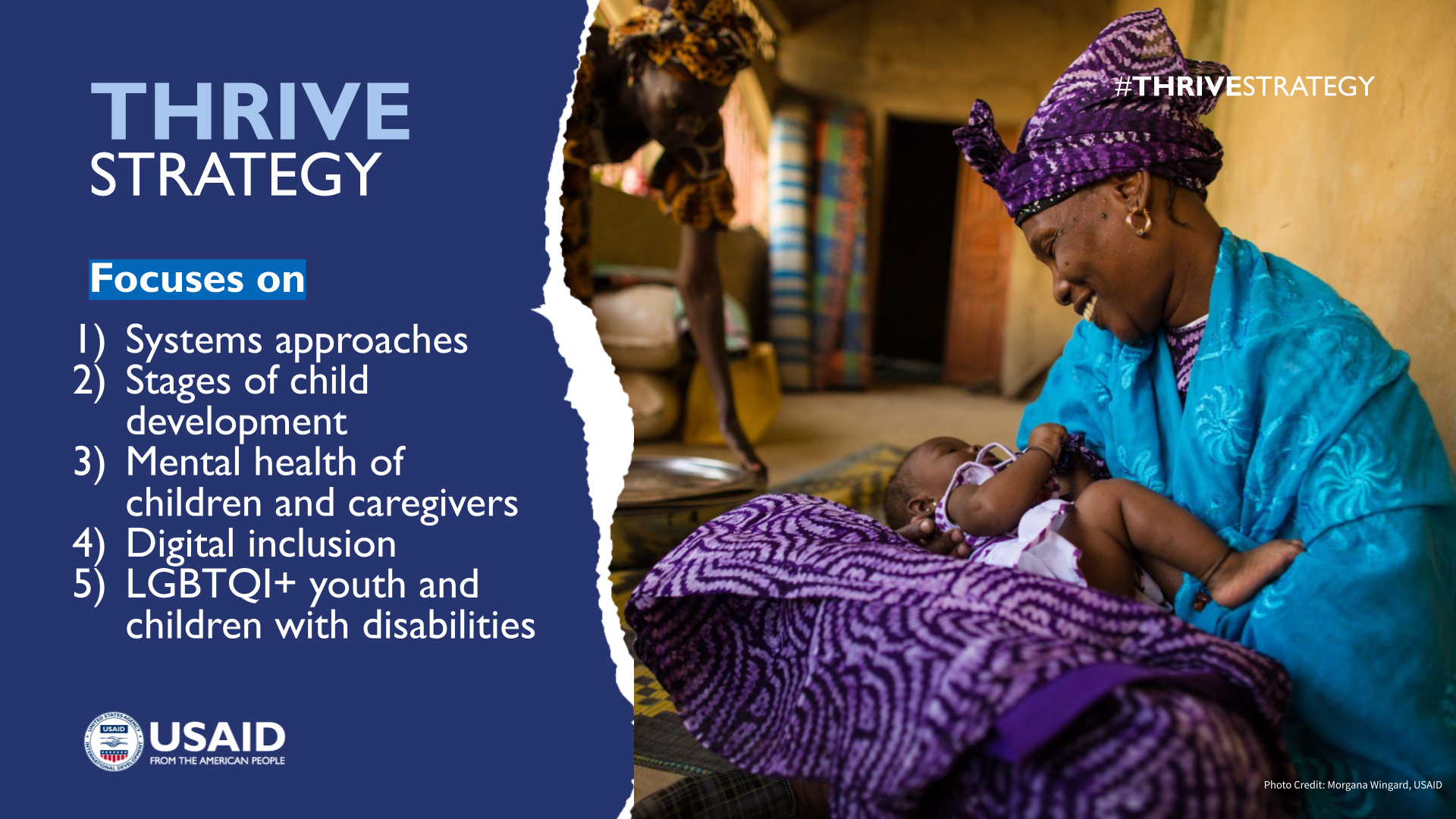This whole-of-government, multisectoral “Thrive” Strategy, which is mandated by the Global Child Thrive Act, aims to build strong beginnings for children, help families thrive, and prevent violence against children.
The U.S. Congress directs USAID to elevate child development, care, and protection needs within its foreign assistance. A whole-of-government, multisectoral strategy is mandated by both The Assistance for Orphans and Other Vulnerable Children In Developing Countries Act (PL 109-95) and the more recent Global Child Thrive Act.
Background
Strengthening the capacities of children, adolescents, and the families who care for them are some of the best investments a country can make to eliminate extreme poverty, boost economic growth, and promote a peaceful society. The U.S. Government Strategy for Children to Thrive 2024-2029 (Thrive Strategy) is a whole-of-government, multi-sectoral effort that aims to build strong beginnings for children, help families to thrive, and prevent violence against children. On July 11, 2024, USAID will host an event to publicly launch the updated Thrive Strategy to guide the interagency effort.
The Thrive Strategy builds on the previous strategy, Advancing Protection and Care for Children in Adversity: A U.S. Government Strategy for International Assistance (APCCA Strategy), which ran from 2019–2023. While maintaining core elements of the previous action plan and strategy, the revised Thrive Strategy incorporates updated evidence related to children in adversity and their needs and considers the ongoing impact of global events, such as the COVID-19 pandemic, spotlighting the complex issues that children in adversity and their families are experiencing.
The revised Strategy also emphasizes these key approaches and priorities:
- A systems approach to supporting children in adversity and their families.
- Ages and stages of development; and how experiencing adversities can affect a child’s expected development.
- The mental health needs of children and caregivers.
- Digital inclusion, highlighting potential digital harms and benefits to children.
- The needs of LGBTQI+ youth and children with disabilities.
- Local and localized solutions.
Key Messaging
- Child development is a cornerstone for all global development, setting the stage for thriving societies with adults who prioritize individual and community well-being and progress.
- Strengthening the capacities of children, adolescents, and the families who care for them are some of the best investments a country can make to eliminate extreme poverty, boost economic growth, and promote a peaceful society. Learn more.
- The Thrive Strategy is an interagency commitment that includes the Department of Health and Human Services, Department of Labor, Department of Agriculture, Department of Defense, Department of Justice, Department of Education, Department of Treasury, Department of State, the Peace Corps, the Millennium Challenge Corporation, PEPFAR, and USAID.
- The Thrive Strategy incorporates updated evidence on children in adversity and their needs, and considers the ongoing impact of global events such as the COVID-19 pandemic, spotlighting the polycrisis that children in adversity and families are experiencing. New elements considered in the revised Strategy include:
- Climate change and its effect on children and families.
- Significant increase in displacement levels, from conflict and especially from effects of climate change.
- Ongoing effects of the pandemic.
- The Global Child Thrive Act, which passed in January 2021 and is now referenced in the Policy section of the revised Strategy.
The revised Strategy also provides increased emphasis on key issues. Those mentioned in the previous Strategy that warranted stronger emphasis include:
- A systems approach to supporting children in adversity and their families.
- Ages and stages of development; and how experiencing adversities can affect a child’s expected development.
- Addressing the mental health needs of children and caregivers.
- Digital inclusion, highlighting potential digital harms and benefits to children.
- Addressing the needs of LGBTQI+ youth and children with disabilities.
Launch Event on 11 July 2024







